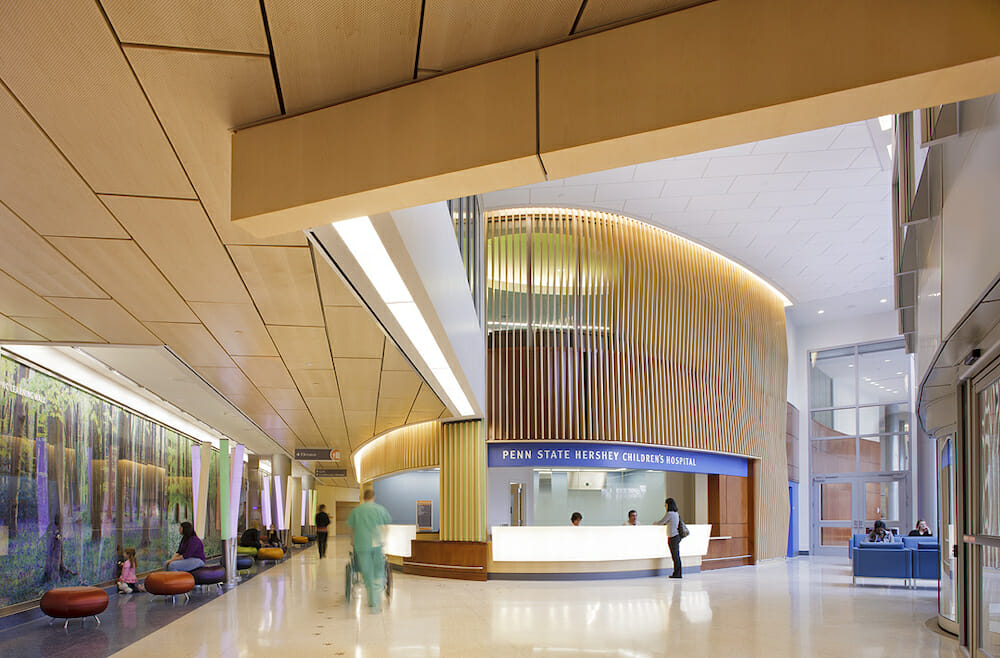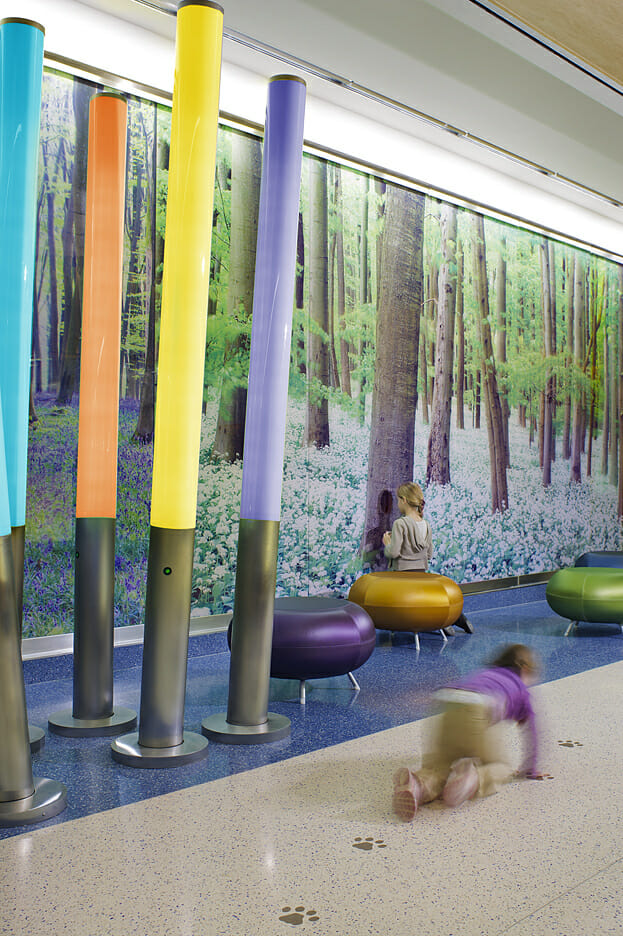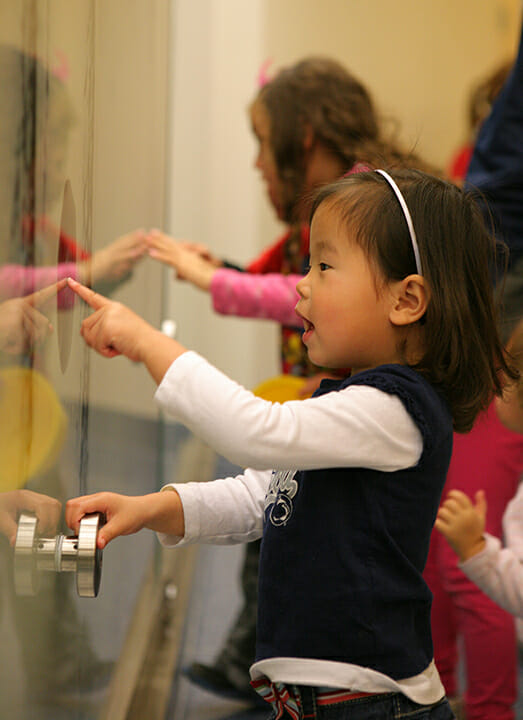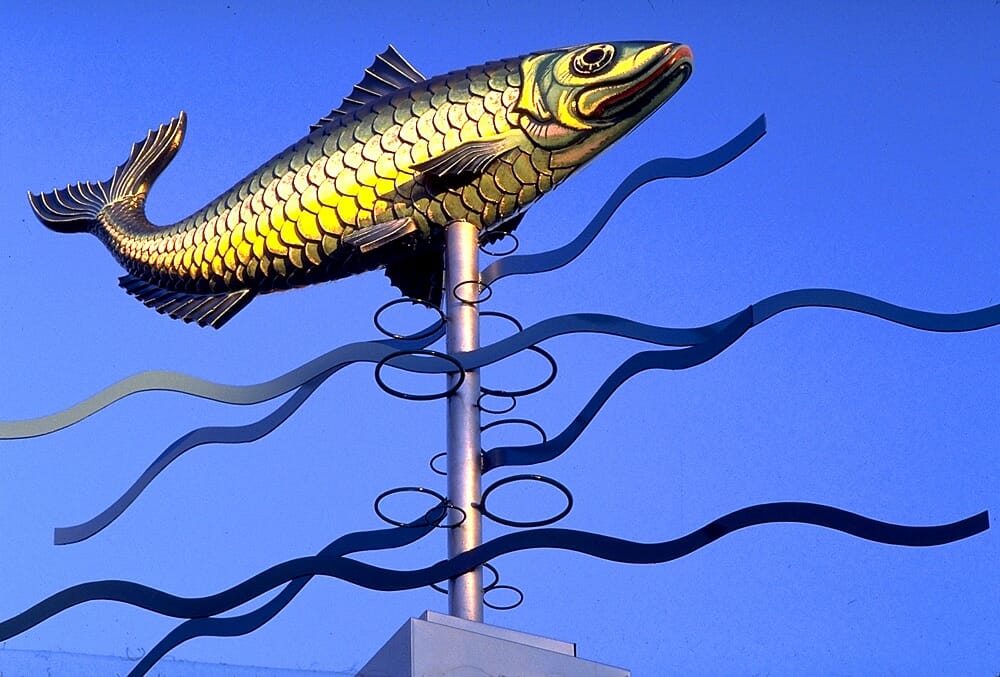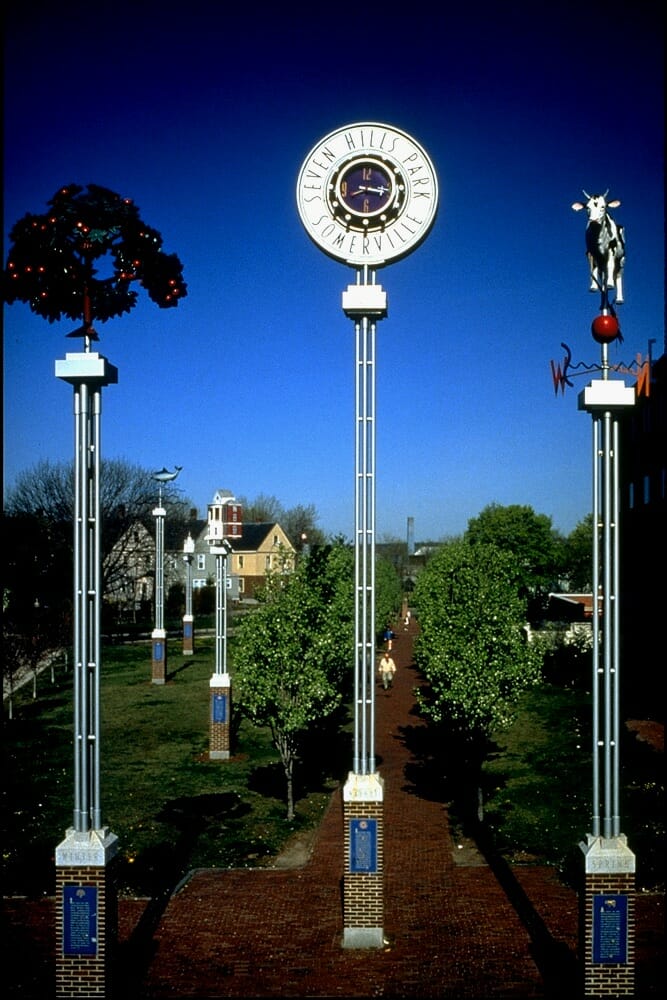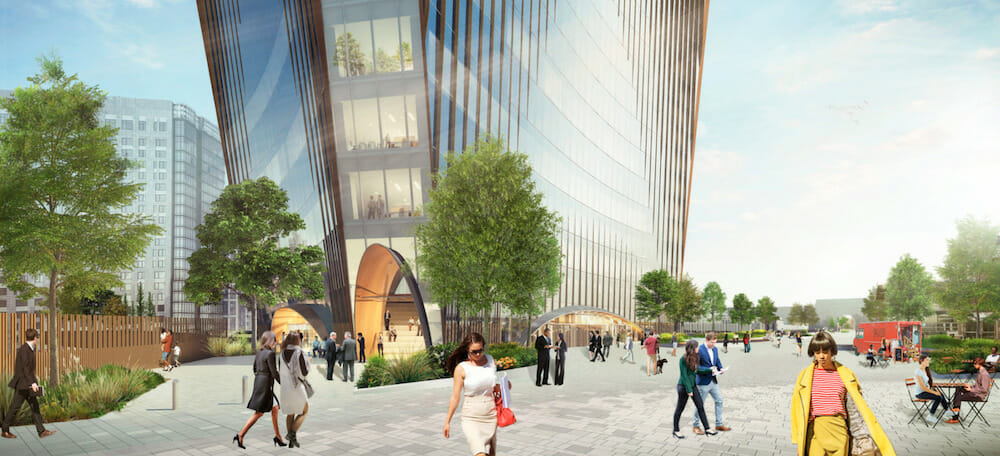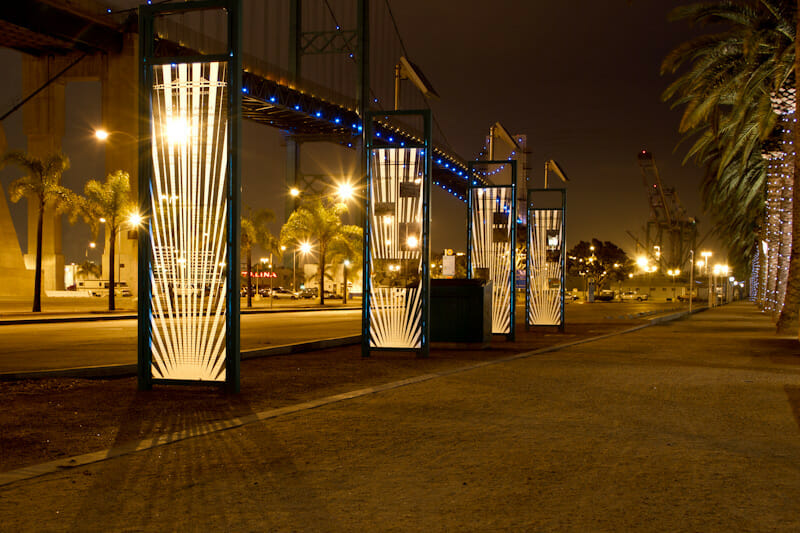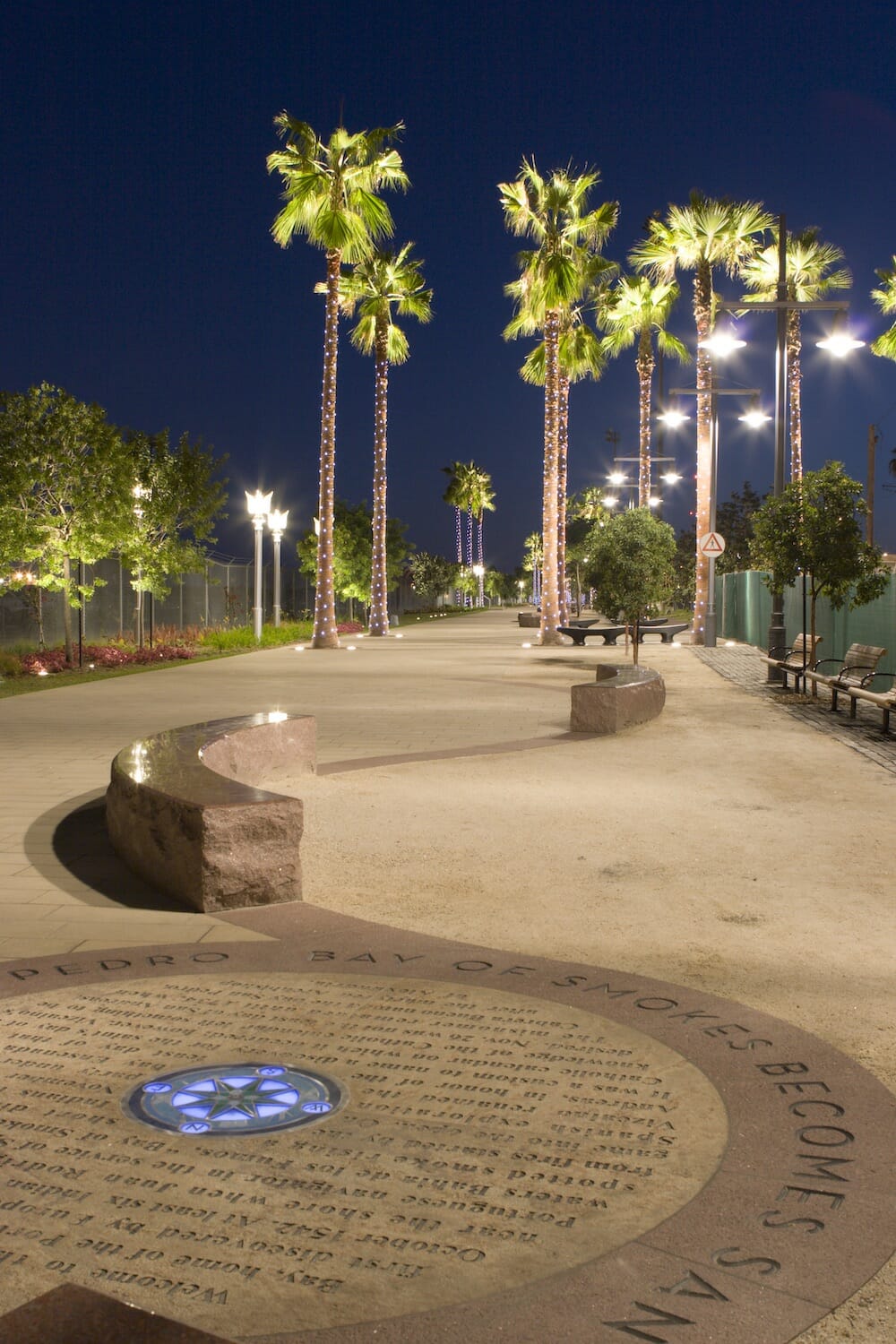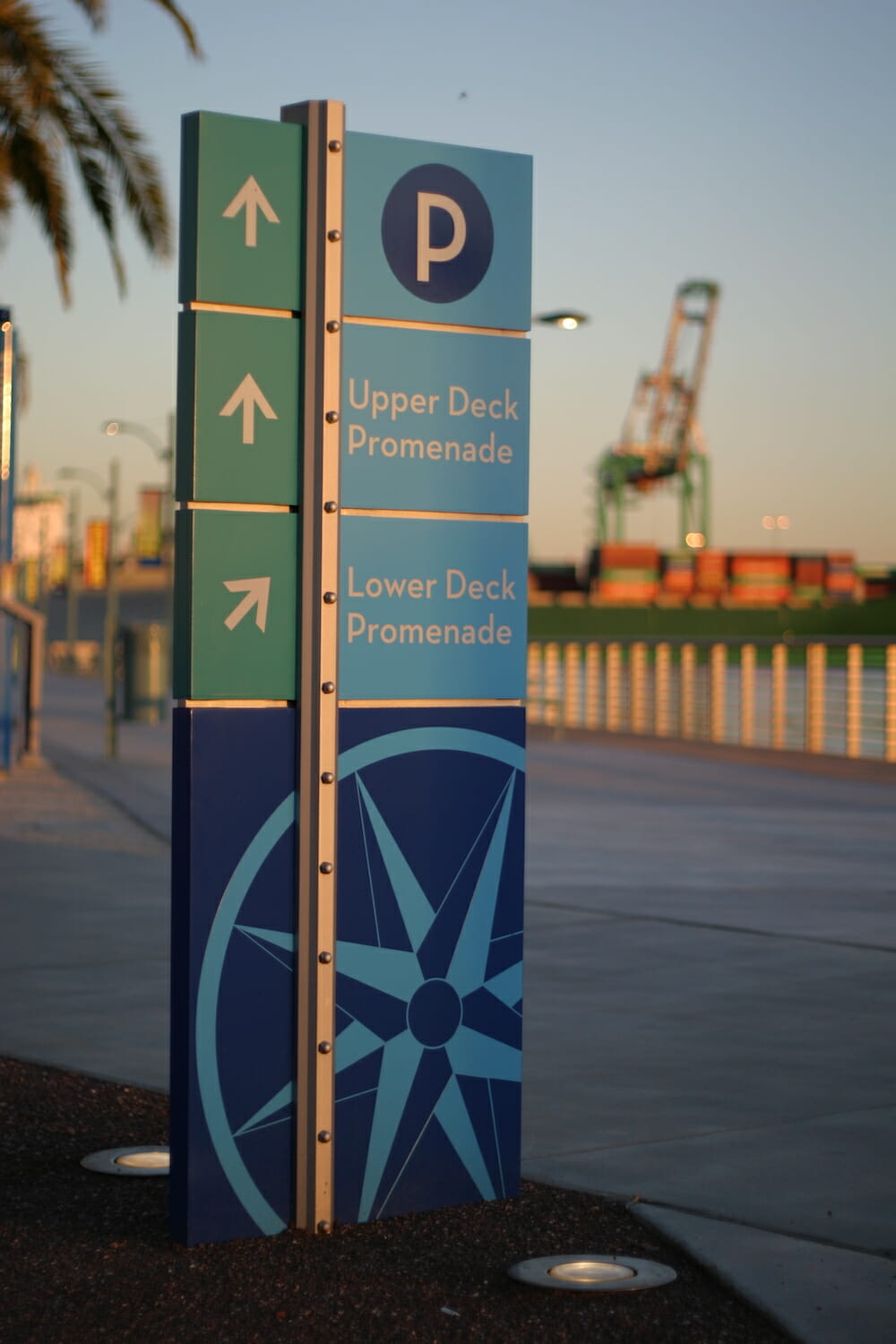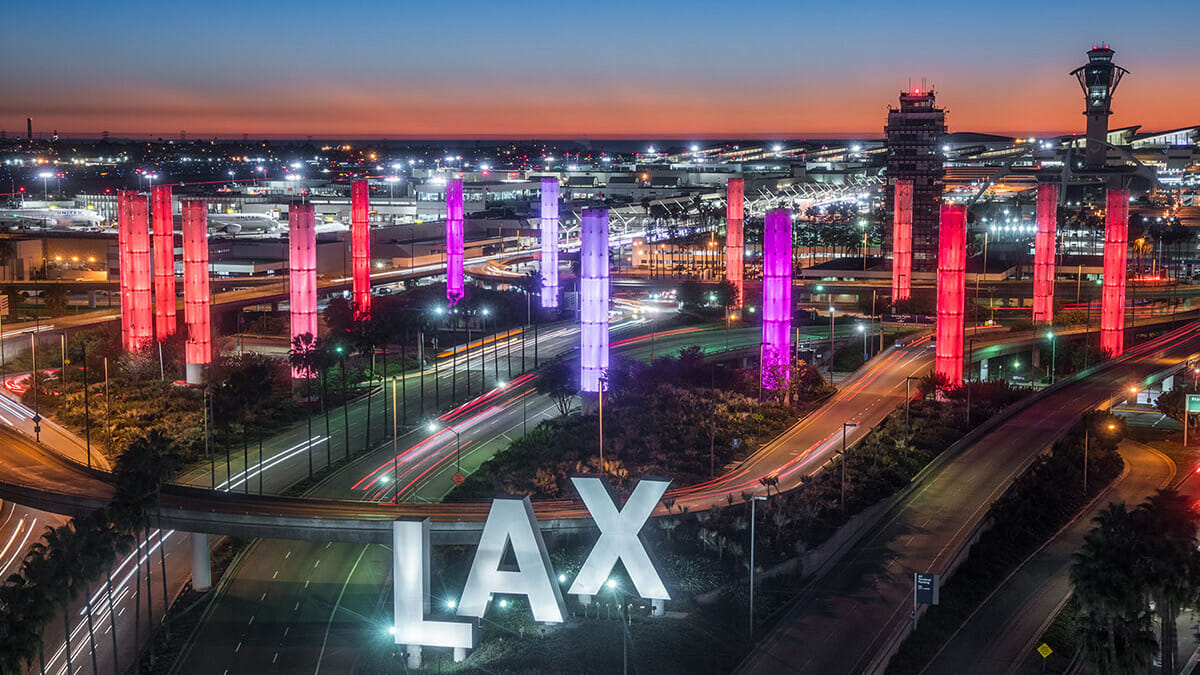Wayfinding the Future
How design can foster human connection
Explore the future of wayfinding, and how it can foster human connection, with Jessica Finch, Principal at Selbert Perkins Design.

Pacific Design Center – SPD developed an interior and exterior signage and wayfinding program, featuring 30’ tall sculptures of a chair and lamp, to reflect the home furnishings industry and mark the entrances of César Pelli’s landmark building.
By Jessica Finch, Principal, Selbert Perkins Design
Remember when we thought 2020 was going to be the year that launched us into the future? Well, it did, but not in a way anyone suspected. The COVID-19 pandemic has rocked every aspect of our world, and for many of us, this involves being in front of a screen constantly. It has forced us to embrace technology-based solutions like never before, often in hopes of maintaining our relationships and some semblance of normal life. Even my 80-year-old mother has learned how to use FaceTime and Zoom so she can attend church and connect with family. If there’s one thing the pandemic has taught us, it’s that technology cannot substitute human connection and creativity.
It’s tempting to think that if technology felt more human, it would be more satisfying. Examples of technology optimized for personal connection would include actually being able to make eye contact on a video call, or if voice-activated technology was better at responding, didn’t sound robotic, etc. This is the stuff of sci-fi, dystopian films like Her, where the main character falls in love with an operating system (not surprising really, since this is the voice of Scarlet Johansen, not Siri). But in real life, Automated Intelligence (AI) programs are making music, poetry, and art. Jukebox is an AI program that generates new music based on algorithms for specific musicians, say, the Beatles. The results are quite convincing, and almost seem like a lost recording…almost.
To wayfind the future, we have to start with the past. The way we make decisions and move through space is based on many things—words (signs), landmarks, color and other cues—which could be visual, tactile, auditory, or olfactory. Many of these decisions are subconscious, tapping into a primal part of our brain. Our species has evolved strong instincts about how to get places, where we feel safe (or not), and how we remember the way. Navigation is a huge part of survival, and the truth is, signs are a small portion of the equation. When it’s working, wayfinding isn’t something we think about. Think about how often you have been given directions by landmarks, not street names, especially in a place like Boston, where the routes are more…well, organic.
So, what is wayfinding anyway? The Society for Experiential Graphics (SEGD) defines it as, “information systems that guide people through a physical environment and enhance their understanding and experience of the space.” As the field has progressively embraced all things digital and incorporated interactive technologies, it has come to be known as experiential graphic design (XGD). In fact SEGD changed its name in 2015 to reflect this change. The XGD or EGD field is still relatively small and misunderstood. I tend to feel that experiential or environmental graphic design is a woefully inadequate term for those who specialize in wayfinding systems, signage design, branded environments, and sometimes placemaking or public art. In reality, we collaborate with architects, landscape architects, cities/towns, organizations, and private developers to enhance the public’s experience.
Penn State Children’s Hospital – SPD worked with Payette Architecture on an integrated wayfinding and art program throughout the hospital including an interactive lobby installation.
Our founding partners at Selbert Perkins Design, Cliff Selbert and Robin Perkins, have been along for the ride throughout this evolution, expanding, defining, and developing the field for almost 40 years. Cliff started out as a landscape architect. In his work for the City of Providence he noticed a need for signs and landmarks. He teamed up with graphic designer/sculptor Robin Perkins in the late 1980’s and, in the ensuing years, they have collaborated with a wide range of municipalities, public agencies, owners, developers, and architects to create landmark projects that connect stories to places using art, communications, and environments. Our recent projects expand the traditional EGD framework to include place branding, art planning, opportunities for digital responsive media, and revenue generating programs. What we’re able to offer our clients is a cohesive, well thought out experience–a place people will not just be able to find, but will remember and enjoy.
Our built environment is becoming more responsive to our movements and environmental factors and will only continue to feel like an extension of ourselves. Thanks to CAD, Revit, Creative Suite, and other programs, almost everything in our physical world was designed on a computer. Augmented reality (AR) and virtual reality (VR) are used to simulate walking around a finished space and help clients get a sense of what it will be like. The gap between the built environment and the virtual world is closing fast and, at some point, we may not even know the difference. There are certainly architects using this new technology to do incredible things, building more unique and sustainable buildings than ever before. But, like the AI Beatles album, there is also a proliferation of buildings and spaces that feel pretty generic, mostly churned out by a computer.
It’s understandable then that there is a growing emphasis on placemaking. Well before the pandemic, this topic had taken center stage, especially in architecture and real-estate forums. Placemaking is sometimes thought of as a branding element, providing a “sense of place” through murals, pop-up events, etc. It’s become code for nicely gentrifying places where people with real stories and histories live(d). For this reason, a distinction is made between “placemaking” and “placekeeping.” Our work at Selbert Perkins Design (SPD) aims to connect people to each other and the spaces we move through, making them more legible and accessible to people of all cultures, ages, education levels, and abilities. We combine art, branding, and wayfinding into a memorable experience. Uncovering the story of a place and connecting that memory to tactile, authentic moments is the work of place keepers. When done correctly, the community is not pushed out, but owns and co-creates it.
One such place is Seven Hills Park in Somerville, MA. When Boston’s MBTA metro train was extended to the Alewife station in Cambridge, MA in the 1980’s, the park and community path were built over the subway tunnel. Cliff and Robin developed the concept of a park to honor the seven hills of Somerville. The park is a prominent part of the square, and features a sculpture for each – Central, Clarendon, Cobble, Mount Benedict, Prospect, Spring and Winter Hill.
Seven Hills Park – A series of sculptures in Davis Square tell the story of Somerville’s Seven Hills. SPD is currently advocating for restoration of the sculptures.
Robin Perkins reflects on the experience, “That piece of property (Seven Hills Park) used to be a parking lot in a very blighted area. It was so powerful for us to see that design could transform it into a community space for learning, relaxation, and inspiration. We found that integrating landscape architecture, sculpture, and communications was an incredibly effective framework for investigating the history of a place and telling its stories through a three-dimensional experience.”
After almost 40 years, the sculptures are in need of repair, and it was the community asking for it. Selbert Perkins Design has offered to work with the City to coordinate restoration.
Fast forward to the modern day, and this sort of storytelling works its way into everything we do. This can be especially powerful when we’re able to use all the tools in our kit to shape experience. Our current project, 10 World Trade (formerly the A2 parcel) is poised to be one of the most interesting buildings in Boston, and one of the most accessible. Boston Global Investors (BGI) and Sasaki beat out Foster Partners and others in the bid for this parcel, because of their emphasis on diversity and welcoming the community into a public social and cultural hub. The project encompasses 24/7 interior and exterior spaces on different levels across three parcels, one of which is surrounded by highways.
10 World Trade – SPD is currently working with BGI and Sasaki on branding, placemaking, and wayfinding for a new office/lab in the Seaport with a focus on inclusion, culture, and public realm. Rendering by Sasaki.
Selbert Perkins Design is working in collaboration with BGI and Sasaki to envision an interactive public realm with a combined wayfinding, placemaking, and digital media program. This is definitely our preferred route, to get involved early and help think through the story of the space. Often this includes naming and branding as well, which follows a hierarchy to help visitors navigate the space. Being able to consider all these things together, while the architecture is still in development, means a more cohesive and integrated experience.
We can’t predict the future, but we can look down the road and see where it’s headed. Whether we like it or not, our lives are more affected by technology every day, changing how we do just about everything. As videoconferencing, touch and motion activated technology, and artificial intelligence develop, they will feel more and more “natural.” As technology continues to weave its way into every aspect of our lives, it will start to feel more human and largely be invisible. This is both exciting and terrifying. The pandemic has taught us that there is no substitute for real human connection. No matter what the future holds, we will always crave connection to our built environment and to each other.
Port of Los Angeles – A branded wayfinding system, interpretive signage, and other placemaking elements invite you to walk and explore a formerly unused industrial waterfront.
